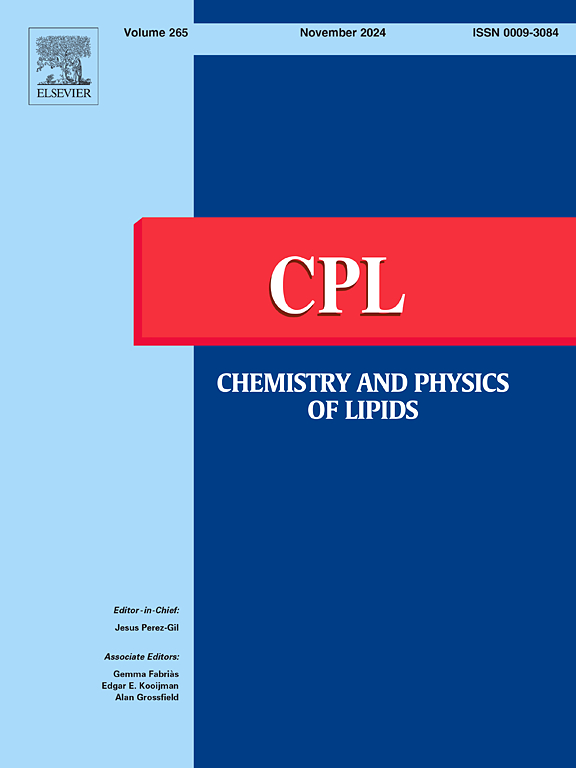解码脂质- poi连接:炎症因子的中介作用
IF 2.8
3区 生物学
Q2 BIOCHEMISTRY & MOLECULAR BIOLOGY
引用次数: 0
摘要
POI是一种高度异质性、多因素的疾病,脂质代谢失调与其炎症发病机制有关。本研究首次采用双样本孟德尔随机化(TSMR)和多变量孟德尔随机化(MVMR)系统地研究了179种脂质、91种炎症因子与POI之间的因果关系。通过整合来自全基因组关联研究(GWAS)和FinnGen的脂质组学和炎症数据,我们确定了18种具有因果意义的脂质,包括风险升高的磷脂酰胆碱和鞘磷脂,以及保护性甘油三酯。在方法上,我们创新地应用贝叶斯加权孟德尔随机化(BWMR)来确认因果估计的稳健性,解决了传统MR在多向性倾向代谢网络中的局限性。生物学上,我们发现IL-10介导鞘磷脂(d40:2)和鞘磷脂(d42:2)对POI的影响的7.02-9.03 %,调和脂质驱动的炎症和卵巢老化-这是一种以前未报道的机制。敏感性分析证实无水平多效性(p >; 0.05)。这项工作建立了三个进展:(1)第一个磁共振证据将特定的脂质亚类(不仅仅是宽泛的类别)与POI联系起来;(2) IL-10作为连接鞘脂和POI发病机制的新型炎症介质的鉴定;(3)结合MVMR和中介分析的验证框架来理清生殖老龄化的直接/间接影响。我们的研究结果提供了临床可操作的见解:IL-10成为潜在的生物标志物,而甘油三酯则突出了饮食/治疗靶点。这种机制的清晰性使POI研究超越了先前的观察关联,进入因果生物学。本文章由计算机程序翻译,如有差异,请以英文原文为准。
Decoding the Lipid-POI connection: The mediating role of inflammatory factors
POI is a highly heterogeneous, multifactorial condition, and dysregulated lipid metabolism has been implicated in its inflammatory pathogenesis This study is the first to systematically investigate causal relationships between 179 lipid species, 91 inflammatory factors, and POI using Two-Sample Mendelian Randomization (TSMR) and Multivariable Mendelian Randomization (MVMR). By integrating lipidomics and inflammatories data with POI from Genome-wide association study (GWAS) and FinnGen, we identified 18 causally significant lipids, including risk-elevating phosphatidylcholines and sphingomyelins, and protective triglycerides. Methodologically, we innovatively applied Bayesian Weighted Mendelian Randomization (BWMR) to confirm the robustness of causal estimates, addressing limitations of conventional MR in pleiotropy-prone metabolic networks. Biologically, we discovered IL-10 mediates 7.02–9.03 % of the effects of sphingomyelin (d40:2) and (d42:2) on POI, reconciling lipid-driven inflammation with ovarian aging—a mechanism previously unreported. Sensitivity analyses confirmed no horizontal pleiotropy (p > 0.05). This work establishes three advances: (1) First MR evidence linking specific lipid subclasses (not just broad categories) to POI; (2) Identification of IL-10 as a novel inflammatory mediator bridging sphingolipids and POI pathogenesis; (3) A validated framework combining MVMR and mediation analysis to disentangle direct/indirect effects in reproductive aging. Our findings provide clinically actionable insights: IL-10 emerge as potential biomarkers, while triglycerides highlight dietary/therapeutic targets. This mechanistic clarity advances POI research beyond prior observational associations into causal biology.
求助全文
通过发布文献求助,成功后即可免费获取论文全文。
去求助
来源期刊

Chemistry and Physics of Lipids
生物-生化与分子生物学
CiteScore
7.60
自引率
2.90%
发文量
50
审稿时长
40 days
期刊介绍:
Chemistry and Physics of Lipids publishes research papers and review articles on chemical and physical aspects of lipids with primary emphasis on the relationship of these properties to biological functions and to biomedical applications.
Accordingly, the journal covers: advances in synthetic and analytical lipid methodology; mass-spectrometry of lipids; chemical and physical characterisation of isolated structures; thermodynamics, phase behaviour, topology and dynamics of lipid assemblies; physicochemical studies into lipid-lipid and lipid-protein interactions in lipoproteins and in natural and model membranes; movement of lipids within, across and between membranes; intracellular lipid transfer; structure-function relationships and the nature of lipid-derived second messengers; chemical, physical and functional alterations of lipids induced by free radicals; enzymatic and non-enzymatic mechanisms of lipid peroxidation in cells, tissues, biofluids; oxidative lipidomics; and the role of lipids in the regulation of membrane-dependent biological processes.
 求助内容:
求助内容: 应助结果提醒方式:
应助结果提醒方式:


